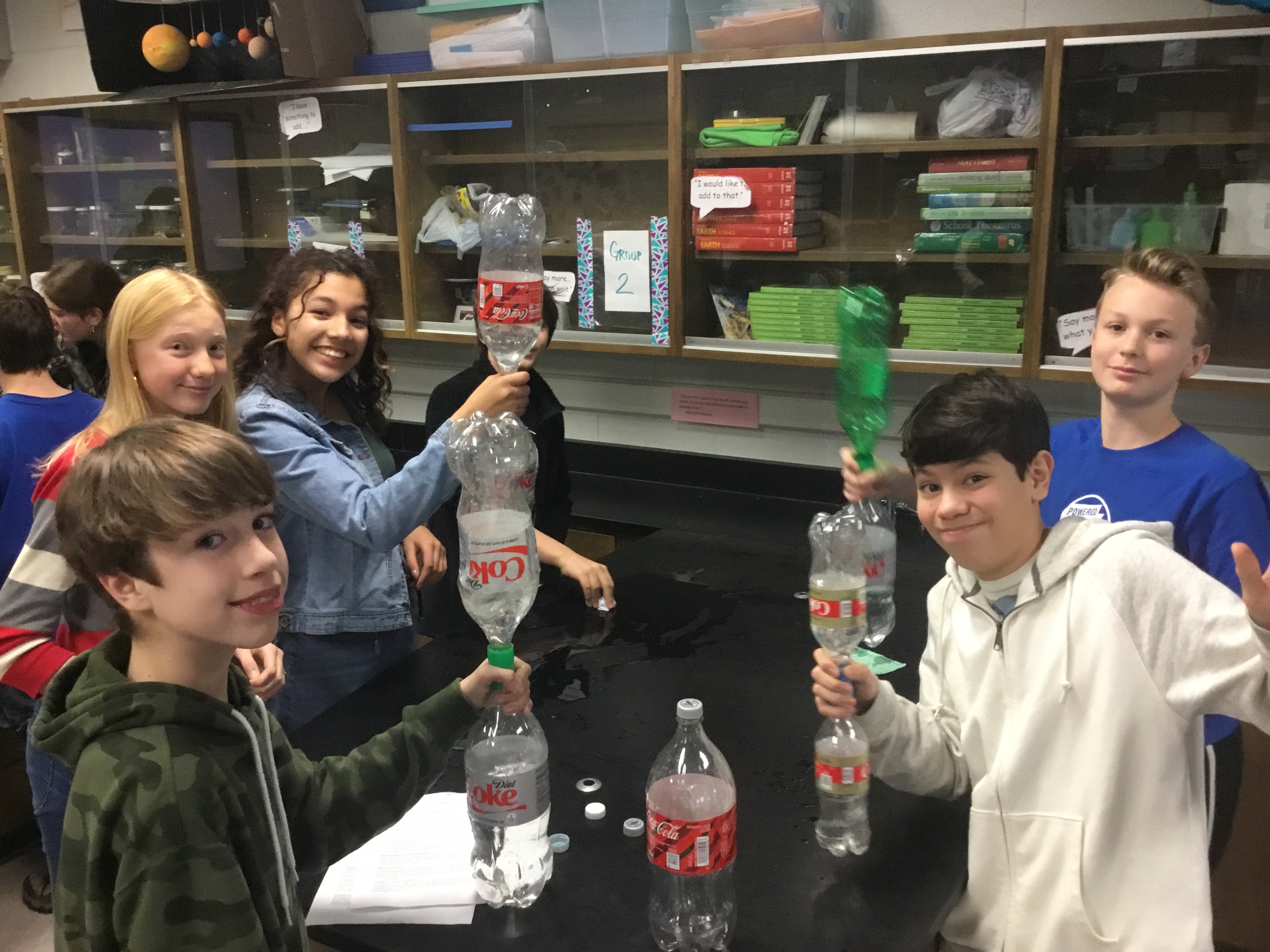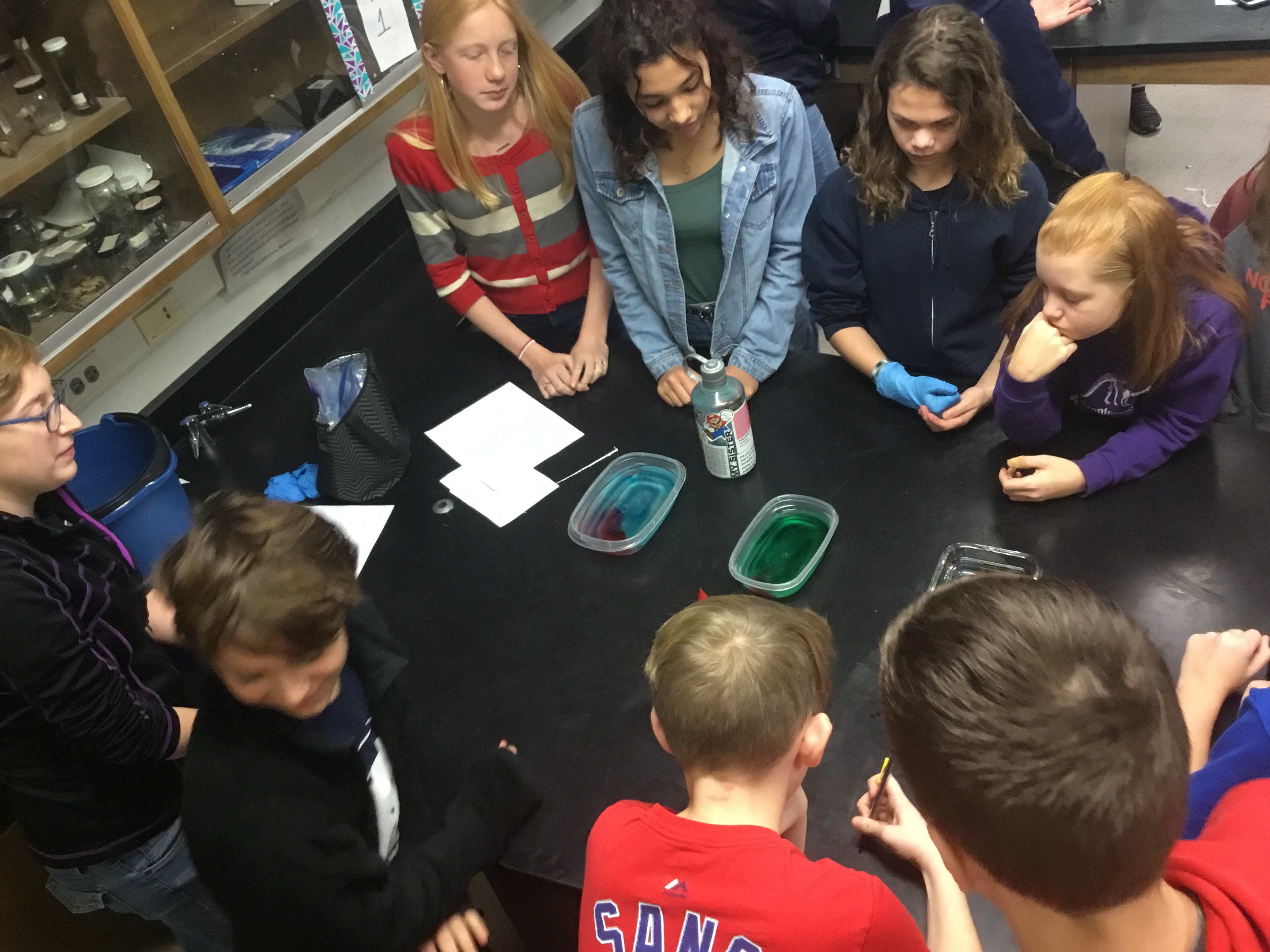
12.4.2018
Experiment Leaders: Josh and Katie
Our experiments for this week’s visit were looking at weather phenomenon. We learned about how clouds and tornados form and about convection currents. To demonstrate cloud formation, we did the classic cloud in the bottle experiment. For this experiment, an empty plastic water bottle was filled with around 3 mL of either isopropyl alcohol, acetone, or water and a bike pump was used to add air into the bottle once the cap was screwed on. Once enough air had been added to the bottle, the cap was quickly unscrewed causing the formation of a cloud! The reason this occurs is because the pressure increase caused by pumping the bottle with air leads to a rise in the temperature inside the bottle. This temperature rise causes the liquid in the bottle to transition to the gas phase. When the cap is quickly removed, there is a rapid release in pressure, which causes a decrease in temperature and the condensation of the gas molecules. This condensation is what we perceive as the cloud. For this experiment, students measured how many pumps from the bike pump it took to create a cloud for each of the liquids used. They should have seen that the number of pumps needed to form a cloud correlated with the evaporation temperature of each liquid. A difficulty with this experiment was sealing the pressure inside the bottle which was solved by placing clay around where the needle was inserted into the bottle cap.

The next experiment was to demonstrate convection currents and it required a bucket of warm water and ice cubes that were dyed blue. Red food coloring was added to one side of the container and the blue ice cubes were added to the other side. Students were able to see that the red dye floated upwards while the blue dye went down. Thus, students saw that warmer liquids rise to the top while colder liquids (e.g. the water surrounding the ice cube) gravitate towards the bottom of the bucket. This was a fun experiment for the students since it involved food coloring and they had the opportunity to play with different combinations of colors for the ice and the warm water.
The final experiment was demonstrating the formation of a tornado. This was done by filling a 2L bottle 2/3 of the way full and connecting it to an empty 2L bottle. Students saw that if the bottle was inverted, it took a long time for the fluid from the top of the bottle to drain to the empty bottle. However, if the fluid was swirled and then inverted, it drained a lot faster. As the swirling of the fluid caused the formation of a tornado, we then explained to the students how tornadoes form.